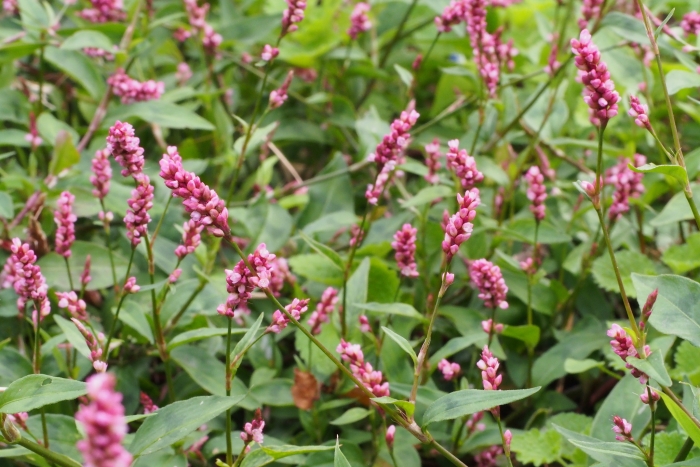Oriental Lady’s Thumb
(Persicaria longiseta)
Oriental Lady’s Thumb (Persicaria longiseta)
/
/

harum.koh
CC BY-SA 4.0
Image By:
harum.koh
Recorded By:
Copyright:
CC BY-SA 4.0
Copyright Notice:
Photo by: harum.koh | License Type: CC BY-SA 4.0 | License URL: http://creativecommons.org/licenses/by-sa/4.0/ | Rights Holder: harum.koh | Publisher: iNaturalist | Date Created: 2014-10-11T10:22:33-07:00 |























Estimated Native Range
Summary
Persicaria longiseta, commonly known as Oriental lady’s thumb or Asiatic smartweed, is an annual herb that originates from moist areas, such as riverbanks and wetlands, in Asia. It has been introduced to North America and Europe, where it is often considered invasive. This plant typically features stems that are 12 to 31 inches long and lance-shaped leaves that can reach up to 3 inches in length. The flowers are small, pink to white, and arranged in a dense, elongated cluster, blooming from summer to early fall. The flowers are not particularly showy, but they can add a subtle charm to the plant’s overall appearance.
Oriental lady’s thumb is valued for its rapid growth and adaptability to various soil conditions, which can be useful for quickly covering bare areas. However, due to its invasive nature, it is not commonly recommended for cultivation. In areas where it is not invasive, it may be used as ground cover or for erosion control. It thrives in moist, fertile soils with good drainage and can tolerate both full sun and partial shade. There are no popular garden cultivars due to its invasive tendencies. Gardeners should be cautious as it can spread aggressively through its rhizomes and seeds, potentially outcompeting native vegetation.CC BY-SA 4.0
Oriental lady’s thumb is valued for its rapid growth and adaptability to various soil conditions, which can be useful for quickly covering bare areas. However, due to its invasive nature, it is not commonly recommended for cultivation. In areas where it is not invasive, it may be used as ground cover or for erosion control. It thrives in moist, fertile soils with good drainage and can tolerate both full sun and partial shade. There are no popular garden cultivars due to its invasive tendencies. Gardeners should be cautious as it can spread aggressively through its rhizomes and seeds, potentially outcompeting native vegetation.CC BY-SA 4.0
Plant Description
- Plant Type: Herb
- Height: 1-1.7 feet
- Width: 1-3 feet
- Growth Rate: Moderate, Rapid
- Flower Color: Pink
- Flowering Season: Spring, Summer, Fall
- Leaf Retention:
Growth Requirements
- Sun: Full Sun
- Water: Medium
- Drainage: Medium
Common Uses
Bird Garden, Border Plant, Butterfly Garden, Low Maintenance
Natural Habitat
Moist areas such as riverbanks and wetlands in Asia
Other Names
Common Names: Oriental Lady’s Thumb, Asiatic Smartweed, 개여뀌, Long-Bristled Smartweed, Low Smartweed, Creeping Smartweed
Scientific Names: , Persicaria longiseta, ? longisetum de, Persicaria blumei, Persicaria blumei, Persicaria blumei var. albiflora, Persicaria buisanensis, Persicaria caespitosa var. longiseta, Persicaria cespitosa var. longiseta, Persicaria erectominor var. roseoviridis
GBIF Accepted Name: